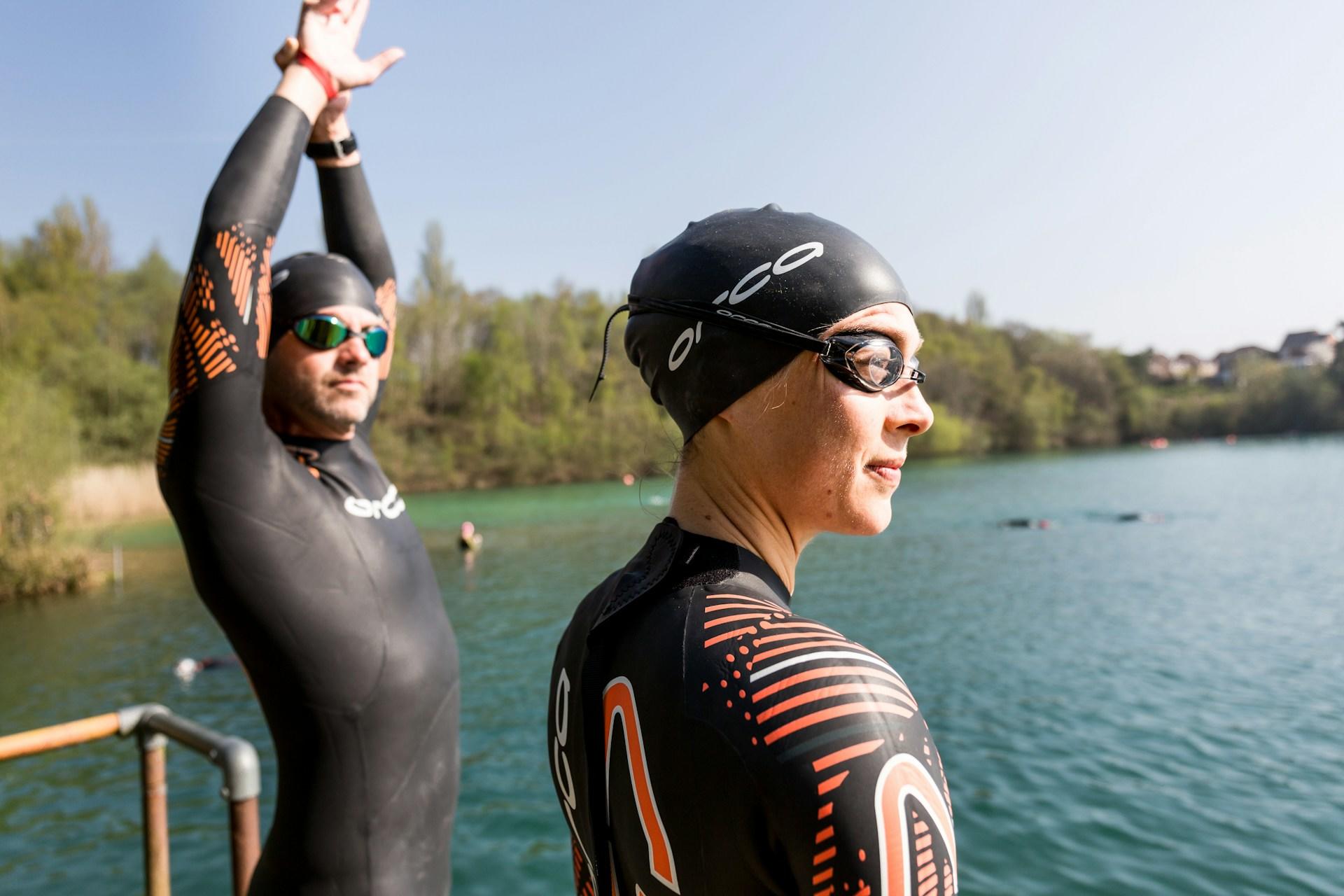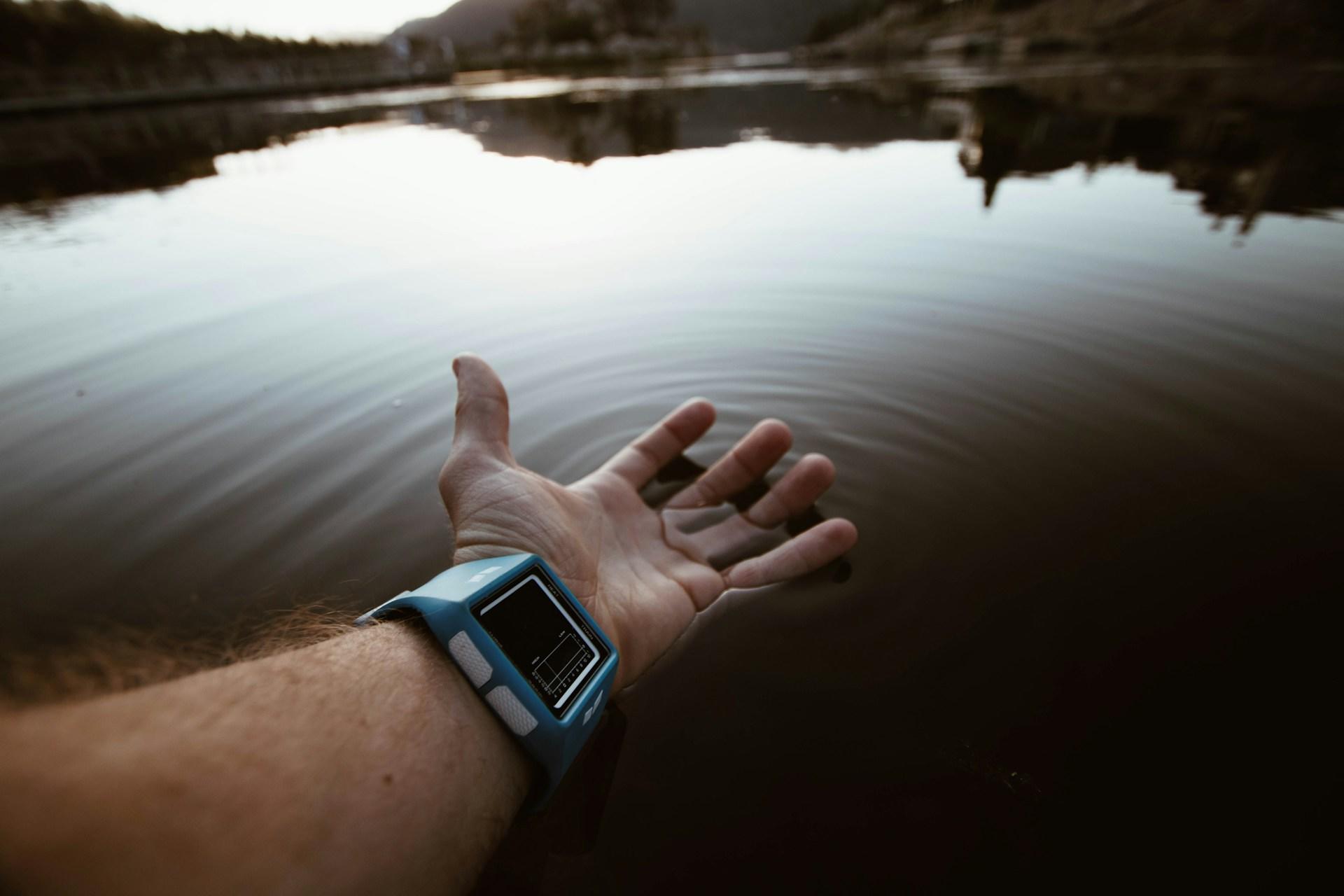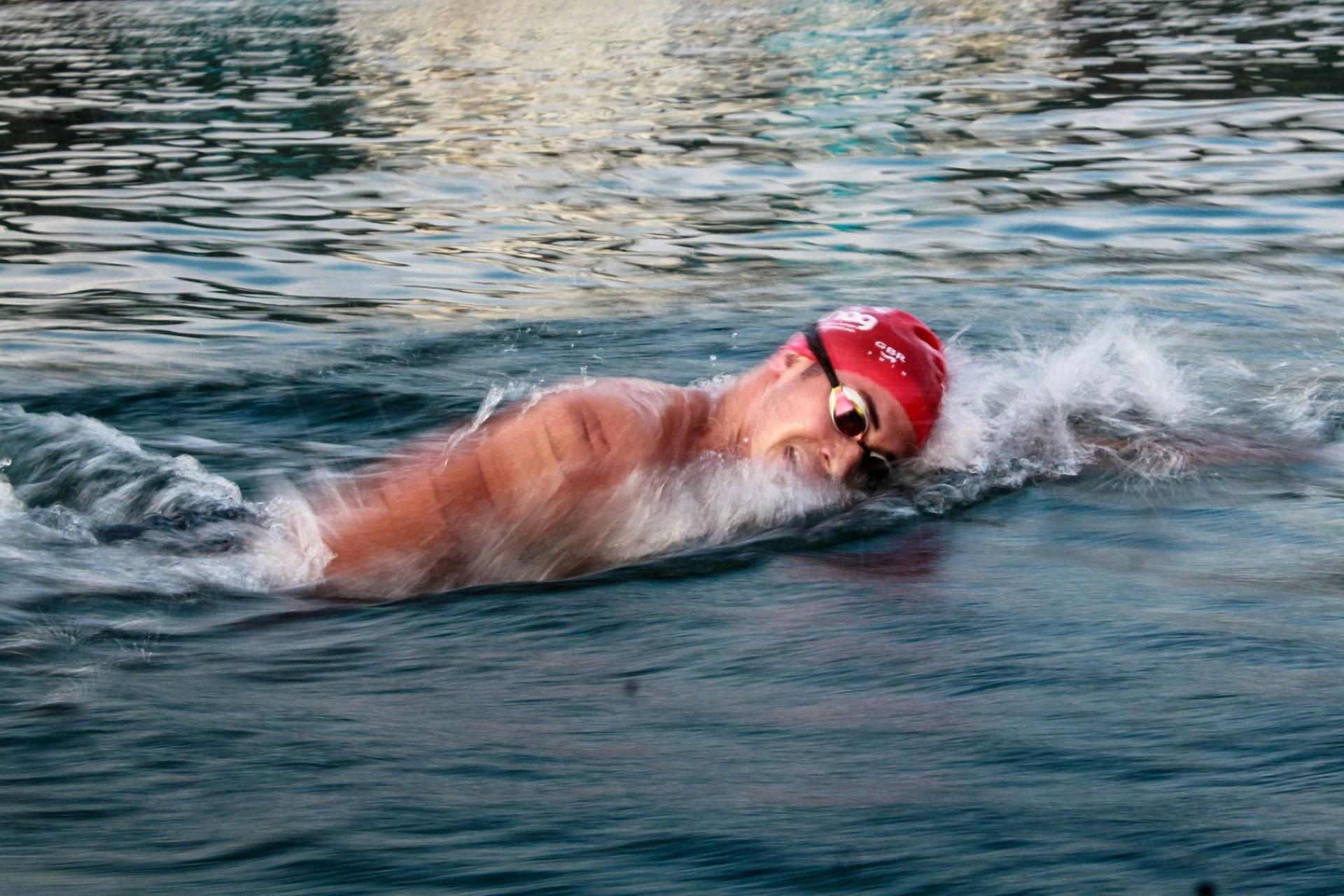When you go wild swimming and, more importantly, cold water swimming, there are quite a few things you should bring with you.
If you're asking what wild swimming and cold water swimming are, they're essentially swimming, but rather than doing it in a swimming pool, you do it in natural bodies of water.
Cold water swimming is a type of wild swimming, but you don't have to swim in cold water every time you go wild swimming.
That said, while most of the items on our list are suitable for wild swimming, there are obviously a few that are specifically for swimming in colder waters.

Wetsuit or Swimsuit
With cold water swimming, proper attire is essential. It's neither wise nor recommended that you start wild swimming without either a wetsuit or swimsuit, especially in cold water.
You can swim in cold water without a wetsuit or any thermal protection, but only after you've acclimatized yourself to it.

Even with a wetsuit, you should work your way up to it. Generally, cold water swimmers start with shorter swims in more temperate waters before attempting longer swims in colder waters.
If you're planning on ditching the wetsuit, then you need to start the process over again and start getting used to cold water without any thermal protection.
Swim Caps
Swim caps can provide thermal protection against the cold, but they also serve a useful function for making wild swimmers and cold water swimmers more visible in open bodies of water.
If you're going to be swimming in a location with other water users, then you should attempt to make yourself as visible as possible, especially if boats or jetskis are using the same waters.

The swim caps for cold water swimmers are generally made from neoprene and are better suited to lower temperatures than your typical swim cap.
Tow Float or Swim Buoy
Tow floats and swim buoys are safety devices and while you may think that they're floatation devices, they're more for making sure you can be seen by other water users.
A tow float will float along the top of the water behind you and is brightly colored so others can see you. This is essential for anyone swimming in open waters where there may be boats, but it's also useful in case you run into trouble.
Manufacturers are very clear that these are not Personal Floatation Devices (PFDs), but they can save swimmers from drowning. They're just not the only safety measure you should have when open water swimming or cold water swimming.
New to tow floats? Check out this informative video.
Earplugs
Whenever you're swimming in cold water, it's a good idea to wear earplugs. Getting water stuck in your ears can be more than annoying, it can lead to hearing loss, infection, and other problems.
The good thing is that open-water swimming earplugs are designed to block out water, not sound, so there are many brands and models that you can use while still being able to hear.
Goggles
The goggles you wear for open water swimming and cold water swimming aren't the same as the ones you'd wear to your local swimming pool.
Firstly, you don't want goggles that leak. These can be annoying and with cold water swimming, you have enough to deal with.
Even if the water is dark and cold, you might want to consider goggles with a tint that protects against sunlight.
There are even goggles with lenses that can change with the conditions, but photochromatic lenses do come at a price.
Water Shoes and Socks
A lot of places where cold water swimmers like to swim will have sharp rocks or surfaces that could scratch or cut their feet.
With water shoes and socks, it's one or the other. You don't need to wear water shoes with water socks, you just need to pick which is appropriate for where you're swimming.
Water shoes are generally better suited to other watersports, but there are water shoes that provide a better feeling of being barefoot and provide more protection against cuts and grazes than water socks.
Water socks, however, are thinner and lighter and feel more like you're swimming without footwear though they won't provide as robust protection as most water shoes.
Here are water shoes and water socks compared side-by-side. Keep in mind that one isn't ultimately better than the other as it depends on your needs.
Water Shoes
- Heavier
- Colder
- Stronger
- More grip
- More expensive
Water Socks
- Lighter
- Warmer
- Weaker
- Less grip
- Cheaper

Swimming Gloves
Swimming gloves are exactly what they sound like, but if you've never done any open-water swimming, swimming with gloves on might sound quite weird.
However, don't get thermal neoprene swimming gloves confused with swim resistance gloves, which are a bit like flippers for your hands and are used to build upper body strength.
Cold-water swimmers need to look for swimming gloves to keep their hands warm in colder waters, which can protect against numbness and make swimming easier.
A Watch
To go cold water swimming, you don't necessarily need a fancy watch or even a smartwatch, it's just important that you have a waterproof watch that you can see when you're swimming so you know how long you've been in the water. If you start feeling unwell for any reason, you should leave the water safely.

When you're conditioning and acclimatizing to cold water, it's also important that you're aware of how long you've been in the water, especially if you're swimming a good distance away from the shore or somewhere you can safely exit the water.
Smartwatches can also provide valuable information on your heart rate and other information so that you know when it's time to stop. To enjoy all the benefits of cold water swimming and wild swimming, you have to know how long you should do it.
Thermos
Cold water swimming is a challenging ordeal for the body and mind so you must eat and drink right before and after you do it.
If you're going somewhere cold, a Thermos or vacuum flask (to use the non-brand name) can keep the contents warm, allowing you to bring warm food or drinks with you.
There's nothing better than being able to eat a warm meal or have a hot drink after you get out of the water, especially after longer swimming sessions where you'll have built up an appetite.
Changing Mat
It's easy for cold water swimmers to think so much about the equipment they need in the water, that all over equipment becomes an afterthought.
With wild swimming and cold water swimming, you won't be getting changed in a changing room so it's important to have a mat you can put on the floor otherwise dirt and sand will cling to your wet feet and your wetsuit.
There are even changing mats that act as a bag, too, so you can put your wet equipment into them when you've finished swimming.
Changing Robe
A changing robe or dry robe is a useful piece of kit. If you're swimming in cold water, you'll likely be somewhere that's quite cold, too.
When you leave the water and want to get changed, a changing robe can keep you warm as you change into dry clothes.
It can also ensure that your body temperature doesn't drop too much, either, which comes with its own risks since as you leave the water and stop swimming, you won't be producing as much heat.

Beyond the safety concerns, getting changed with a changing robe is far more comfortable and dignified than simply getting changed with a towel.
First Aid Kit
Safety is paramount when it comes to wild swimming or cold water swimming. Not only should you always go with a buddy so that you can have each other's backs, but you should also be first aid trained and have a first aid kit with you.
A lot of cold water swimming locations can be remote so medical assistance won't be immediately available if anything goes wrong.
Bring a first aid kit with you and make sure that you know how to use it.
Ensure your swim skills are adequate with swimming lessons near me on Superprof.
Waterproof Phone Case
If you're planning on exiting the water at a different location from where you entered it, you might want to bring your phone with you.
A waterproof phone case is essential for this and even though there are waterproof phones on the market, these cases also protect against damage and give you a means to more easily transport your phone.
Having your phone on you can also be useful for contacting others or emergency services when necessary and could even provide GPS data to your rescuers if it ever comes to that.
Investing in a waterproof case for your phone means you can use it in an emergency.
Sunscreen
Last but not least, you should bring sunscreen. Even if you're swimming in cold water, the sun is still out there and harmful rays can even penetrate cloud coverage and the water's surface.
If you're going to spend a long time out swimming, you must regularly apply sunscreen and protect yourself against the sun. You don't want to ruin an otherwise nice session of cold water swimming by coming back with sunburn.
Just remember that your behavior when cold water swimming and wild swimming is as important as the gear you use so be sure to prepare properly before you do any kind of open water swimming.
















